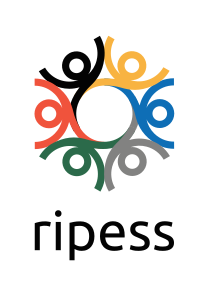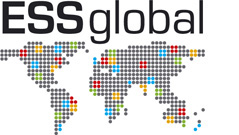What are we talking about? What are the challenges?
While many of the Social Solidarity Economy initiatives are rooted in historical forms of mutual, cooperative, collective and community practices, the more holistic and systemic approach that aims to transform society and the global market economy is rather recent (See: What is SSE). It is evolving rapidly in many different ways around the world.
What are the different dimensions of SSE and how can we “measure” them and make them visible?
The standard institutional economic and statistical systems are largely insufficient in addressing these issues; and when they try to draw a picture using census data and the type of economic initiative (non profit, cooperative or social enterprise for instance), they only give a partial and distorted image of what SSE actually is. Many confuse it with the Third Sector or Social Economy, without taking into account the numerous different forms – both formal and informal, sectoral and intersectoral, hybrid and networked – in which SSE manifests itself, going well beyond the traditional distinction of the three sectors of the economy.
With such a dynamic evolution of SSE, the following challenges need to be addressed:
- How can we build a more realistic picture, that not only focuses on the economic dimension, and also takes into account other aspects as the social and political context, the cultural and ethical aspects, the governance and democratic issues, human rights and environmental justice etc.?
- And how do we “measure” the different dimensions of the SSE? What indicators should be used?
- Is it possible to develop some common methodology, exchanging and learning from the many existing experiences, to compare and share information on SSE that is relevant for all?
- How can we make the “map” and “solutions” offered by SSE worldwide more visible, in the media, public opinion, academia and political spheres?
Answering these questions is the goal of the Panorama of the SSE, an attempt to identify, analyse and show the “whole” picture today, both as a way to make it visible, and to inspire new and strengthen existing SSE initiatives and networks.
What perspectives for working at intercontinental level?
While there are many local or small scale mappings and reports on the state of the art of SSE in several countries (see, for instance, the last report of the Spanish Solidarity Economy network REAS – in spanish), the public availability of the information, updating and maintaining it as well as the possibility to compare the information at different levels is an important challenge, and still limited to some continents or regions of the world. But as SSE is emerging as a worldwide movement and RIPESS Intercontinental is networking with more organisations, the need to have some comparable and cross-related information has become inceasingly important, and needs to be addressed.
Example of the European Panorama
The desire to draw up an overview (Panorama) of the SSE emerged during the European network’s General Assembly (RIPESS EU) meeting in 2013, with the goal of providing a well- anchored vision of the existing initiatives in Europe and of bringing together the content to be used to build a shared solidarity economy advocacy process (See more details below)
Mapping the SSE mappings
One of the first activities to create a network and a circuit of SSE is (community) mapping. Through both territorial and (inter-) sectoral mapping of actors, initiatives and practices (or “solutions”) that identify with the SSE approach and vision, it is possible to identify who is actively promoting SSE and try to link up. Mapping methodologies can be very different and be either self-led or done by third parties (universities, think-tanks, public authorities, SSE networks, etc.). See the ESSGLOBAL initiative, described below.
Some concrete outcomes
The European Panorama
The desire to draw up an overview (Panorama) of the SSE emerged during the European network’s General Assembly (RIPESS EU) meeting in 2013, with the goal of providing a well- anchored vision of the initiatives existing in Europe and of bringing together the content to be used to build a shared solidarity economy advocacy process.
- To do so, it was decided to work on a shared questionnaire and carry out the same survey in several countries. Various SSE actors and researchers worked on drawing up the questionnaire. This approach, encompassing both research and field work, is helpful for many purposes but needs time, resources and dedication.
The online survey exists in six languages (English, French, Spanish, Greek, German and Italian) and is revised each year. This could provide an opportunity to publicise innovations in the field and develop a better understanding of the different contexts and evolution of SSE in each country, the kind of practice identified and the existing initiatives as well as legal frameworks, and public policies adopted, etc.
The SSE overview also incorporates work on the social audit and evaluation already adopted in some national networks, comparing the different existing approaches and identifying common foundations. This work has also served to bring together actors within an emerging participatory process that needs to be consolidated and to open up to other members not yet using such tools.
- There are also several alternative economy mapping projects which can be complementary to the Panorama: Transformap (mainly Austria-Germany) and the Intermapping initiative, which continues the work of development of standards for interoperability between the different online systems started with ESSGlobal and using technologies of the semantic web (Open Linked Data). Urgenci Europe has also carried out extensive mapping of Community Supported Agriculture in Europe, and is currently mapping other continents.
- Another important tool to improve the research and analysis work is the collection and organization of documents on the SSE, which is currently carried out by Socioeco.org, with thematic axes and a collection of more than 5000 documents in 7 languages. Socioeco.org has developed a map of solutions through SSE that presents descriptions of SSE initiatives, classified by the needs (food, housing, etc) they are trying to address in the world. They aim at providing further information and inspire new experiences. A mapping prototype is being designed that will collect data in existing maps (on commons, CSA, etc) to display the whole set of alternatives in a given territory.
[su_spacer size=”10″]
- Finally, a partnership was started with the European project SUSY-SSEDAS (solidarityeconomy.eu), which covers almost all of Europe (23 countries in the Union and 8 extra European), including Brazil. The objective is to research initiatives that best represent the SSE in 46 European territories, as well as training and outreach activities. This project has adopted the Panorama framework for their work, and will also share the results with RIPESS.
ESSGLOBAL – Inter-connecting social solidarity economy (SSE)
The ESSglobal is an initiative of some members of the RIPESS network (initially mainly Europe and Americas). Interaction among single initiatives using ICTs (Information and Communication Technologies) to map Solidarity Economy networks and territories have been taking place since the third World Social Forum in Porto Alegre (2005), Brazil. During the 4th RIPESS Globalisation of Solidarity Meeting in Luxembourg (LUX 09), a workshop was held on Communication and Information Systems. As a result of this workshop, a working group on “mapping” was formed in the RIPESS framework in order to:
- Facilitate visibility of international activities and products of the solidarity economy
- Pool methods and tools for existing and planned mappings (to be made available in the form of a resource center for existing partner sites and for new networks that wish to join)
- Develop cross-functional projects of human and economic cooperation between partners of the working group
- Cooperate with other initiatives to track Solidarity Economy actors and existing or planned networks.
The Working Group initiated an international mapping project involving several RIPESS members that had already developed or were in the process of developing ICT platforms: Germany, Austria, Spain, France, Italy, Luxembourg, Brazil and Canada (Quebec).
At the same time, an analysis of the state of the art on the existing ICT tools and online collaboration (internet platforms) in Europe has brought together players in the SSE.
The main aim of the ESSglobal project is to allow the exchange of data and information among the different platforms through comparison and common agreement on standards of interoperability, and have decentralised search engines to simulate a global, multi-layered mapping. The first version of the ESSglobal interoperability standards was released in 2013.
Reference resources
Socioeco.org Map of solutions through SSE
Download the ESSglobal interoperability guidelines (pdf).
Advancements on the development with open linked data and the first version of the SSE Global RDF Vocabulary can be found here.



